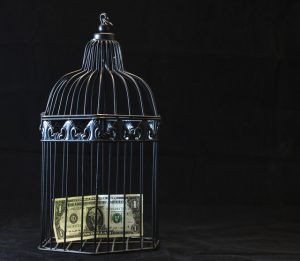The Debtor in Possession Financing (DIP), is kind of financing for companies that are having troubles with cash flow and facing bankruptcy. It is different from other methods of financing since it is given priority over existing equity, debt and any other claim.
Debtor in Possession Financing however, cannot be used freely by companies. It can only be utilized by those enterprises that file for bankruptcy protection under Chapter 11 in the United States of America.
The financing given allows you to raise the necessary capital to fund your operations as the bankruptcy case is running its course.
When to use the Debtor in Possession financing
This form of financing is generally for the facilitation of the reorganization of your debt ridden entity, by enabling you to raise the much needed funding. Hence you use the DIP when you need to keep your company or business operating until it would likely provide greater return than closure and the liquidation of the assets.
The Chapter 11 (Bankruptcy)
The Chapter 11 bankruptcy is a section found in the United States bankruptcy law. It provides guidance under which individuals and companies can try to reorganize or restructure their assets and affairs so as to repay their debt. It was named after the United States code 11.
It provides the debtor with a fresh start since it gives time to restructure by keeping the entity running in time of bankruptcy. Chapter 11 provides the most complex bankruptcy cases. Yet, having to run a business while restructuring the company tends to be expensive.
Under this chapter, the business or individual who is filing bankruptcy is always given the first chance to lay out a reorganization plan. The plan can be anything from scaling down the business operations, cutting significantly on expenses or even having to renegotiate the debts.
In some scenarios, though relatively low compared to other plans, the plan may involve the drastic measure of liquidating all your assets to be able to repay your creditors. When the plan decided upon is seen to be in the best interest of the creditors and also feasible and fair by all means, the courts accepts it, consequently enabling the process to move forward.
In the cases where the debtor does not provide a way forward (program to be followed in repayment), the creditors are allowed to go ahead and make their proposal instead. The process of Debtor-in-Possession financing.
As seen above the DIP can be applied for mostly for businesses and in some cases individuals.

For Businesses
When a company choose to run for Chapter 11, it will be required to submit the plan to reorganize to come up with an aggressive business plan to recover. This plan must be able to explain clearly to the bankruptcy court and shareholders involved what are the future measurements in management and operations to be taken. All these efforts to the point out on how to compensate for money owed.
After the submissions, the United States’ bankruptcy division of the Justice Department, known as the “Trustee”, appoints one or even more committees to represent the company‘s creditors and the shareholders as well.
The negotiation process for business tend to take at least a couple of months, as it is required to distribute goods among shareholders, with the goal of getting their investment back. After the negotiation, the parties concerned, that is, shareholders, creditors and the bankruptcy court, must green light the reorganizing plan.
The SEC is in charge check the details of the plan to make sure in comply with the current laws. It has no power over the plan itself, the courtroom is the only organism that can take decisions upon the plan, regardless of whether shareholders approve or not.
The company is allowed to keep on running with the existing management known as the “debtor in possession“. The bankruptcy court needs to approve important arrangements set in the operational plans.
In the event that there is involvement in fraud, gross incompetence or dishonesty, the court appoints a trustee which steps in to carry out the management duties during the entire proceedings of the bankruptcy case. The company will not have to make dividend, principal or interest payments during the bankruptcy.
There is a specific rank of importance when it comes from lenders – depending if they fulfill certain requirements they will be paid first or last. For instance, lenders with secured debts obviously come first. Shareholders are the least favored in this hierarchy.
Individuals
Individuals don’t often file for DIP financing under Chapter 11. There are less cumbersome procedures for individuals facing bankruptcy or lack of liquidity.
In any case, for those individuals choosing for apply to DIP financing, as companies they will need to file a petition with the local bankruptcy court. The required documentation for the first step is merely tax and financial information, alongside a detailed list of obligations. It is worth mentioning legal actions will stop after Chapter 11 is filed.
Approval Process
An interim Debtor in Possession hearing is held within days after filing of the Chapter 11 petition, on notice to the parties involved.
The final hearing is then generally scheduled within 30 to 45 days after the appointment of the committee which represents the interest of unsecured creditors, called the Creditors committee.
How you can choose a Debtor in Possession (DIP) lender
Based on the importance of choosing the right DIP lender, there are key considerations that you must dig into. They include:
- Relationship with the existing lender: It is important to consider if the current lender you have is still willing to lend you more funds. At times, stresses that leads to bankruptcy filing results in an irreconcilable differences between lender and the borrower. This may lead to the unwillingness of the lender to give you more funds. In that case, you may have no choice but to look for other alternative debtor in possession loan providers with favorable conditions.
- Capability of the lender: A borrower must consider the capability of the lender. The lender should be able to adequately look into the reorganization of the business and understand the plan to avoid future misunderstandings. They should also be in the possession of working closely with the borrower to offer assistance when need arises during the bankruptcy period.
- Expenses and fees: The debtor-in-possession financing model are always expensive than other regular borrowing arrangement you can get.
For the small businesses, owners have to provide personal guarantee used for backing up their loans.
Having acquired the debtor in possession finance does not provide a surety that the business is going to succeed and get out of bankruptcy. In case of failure, the business will end up in more debt than before.
A good Debtor in possession lender should have expertise in the following:
- Ability to streamline information that are requested.
- Providing of knowledgeable professionals for timely and helpful dialog.
- Provision of an online based application process.
- Well-structured and straight forward documentation.
- Fair and transparent fees or rates which are easy to understand.
- Have a mechanism put in place to enable ease of reporting at any given time.
- Should be in the possession to provide ancillary services beyond the ordinary lending services.








